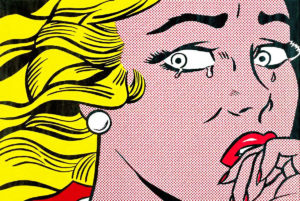It’s not exactly headline news if I insist that the Swedish auteur, Ingmar Bergman, was one of the very greatest filmmakers of all time, but when I immersed myself in his films while living alone last winter, they hit me with the force of a private revelation. I’d first been introduced to Bergman at university two decades earlier, and his doomy fretting about the silence of God appealed to the tortured, Dostoevskian 20-year-old I then was. But it took me until the age I am now — 40 — to really have my moment with him. The older self who feasted night after night on Bergman’s enormous body of work (he directed 62 films, of which I watched but a third) now came to him bearing a heavy freight of “life experience” — the polite term for wounds, regret, remorse, affliction and sorrows. In short, I came to him in the same condition as just about anyone who reaches this most interesting age.
Bergman himself didn’t really get going till he was in his late thirties, just as he was leaving youth behind. The 2018 documentary, Bergman: A Year in a Life, pinpoints 1957, when Bergman was 38, as the year when he ascended to the fullness of his mature talent (both The Seventh Seal and Wild Strawberries were released that year). Throughout the Sixties and Seventies, he turned out masterpiece after masterpiece, working with the same trusted actors: Liv Ullman, Max Von Sydow, Ingrid Thulin, Harriet Anderson, Bibi Anderson, Erland Josephson, Gunnar Björnstrand. It’s telling that when you google Bergman’s best films, none of the lists even closely match up. The quality and consistency of the work he produced across decades resists consensus — everyone has their favourites.
Unsurprisingly, Bergman’s life and appetites match up with his output. The personality that emerges from Bergman’s memoirs The Magic Lantern and Images, and from other accounts of him, is not especially likeable. He wrote The Magic Lantern well into his sixties, but age had not blunted the cruel, petty, vindictive streak he wielded like a weapon against anyone who dared cross him. Recalling a chance encounter in Munich with one of his “most damaging critics” (whom he had previously tried to assault), Bergman can barely restrain his seething hatred: “There goes a Deadly Enemy. He should be destroyed. True, he was destroying himself through his deteriorating writing, but I shall dance on his grave and wish him many eternities in hell, where he can sit and read his own reviews.” In an open letter he wrote to the Swedish authorities in the aftermath of a humiliating tax scandal, he menacingly quotes his hero: “I say as Strindberg did when he was angry: ‘Watch out, you bastard, we’ll meet again in my next play.’” Bergman liked power, and had no qualms about using it for punishment or revenge. Possessing huge natural charisma, he inhabited all too comfortably the role of the ruthless and belittling male genius, trampling on the sensitivities of his underlings, humiliating other men to assert his dominance.
Nor had he any qualms about utilising power’s famously aphrodisiacal qualities on his beautiful female actors — half of Sweden’s talent seems to have belonged to his harem. In Images, there’s a strikingly intimate photograph of Bergman directing the radiant Ingrid Thulin: looming behind her, he cradles her head while murmuring in her ear with his eyes closed like a husband or a horse-whisperer. “Film work is a powerfully erotic business,” he wrote in The Magic Lantern. “The proximity of actors is without reservations, the mutual exposure is total… [T]he atmosphere is irresistibly charged with sexuality.” While some of his children seem to have loathed him or held him in contempt — only three out of eight attended his funeral — the loyalty his collaborator-lovers felt towards him tended to survive the ends of their intimate relationships. In some ways, it isn’t hard to see why they found him so attractive, so worthy of love. Bergman’s desire for women was matched by his curiosity about them — he was able to convey their inner lives with a perceptiveness and accuracy rare among male artists. Key films such as Persona, Cries and Whispers and The Silence have hardly any men in them at all.
But I’d argue that the key Ingmar Bergman film — the one that both unlocks the core of his troubled personality and provides a fascinating meta-commentary on his oeuvre — isn’t one he actually directed. Having announced that he was giving up directing for the cinema after his marvellous, life-affirming 1982 film Fanny and Alexander, in his later years, alone on the island of Fårö, Bergman wrote several highly personal screenplays to be directed by his friends (a control freak to the end, when he could no longer direct, Bergman directed the directing). Among these was Faithless, the lacerating 2000 autofictional drama directed by Liv Ullmann — Bergman’s former lover and enduring friend. In the film, an old man (called “Bergman”) converses with a younger woman whom we quickly realise is an imaginary character from a screenplay he is writing — and a ghost from his past. As the woman tells him her painful story — which is also his own — “Bergman” confronts his shame, guilt, and agony in a narrative that accesses zones of remote psychological darkness rarely breached in film. At the heart of the old man and the woman’s shared story is the adulterous affair they conducted when they were both in early middle-age — and the brutal consequences that ensued.
In The Magic Lantern, written well over a decade before Ullmann directed Faithless, Bergman devotes an entire chapter to recounting the episode that would inspire the screenplay. The two versions are identical in all but a few details. It’s as if, in first writing about the affair in his autobiography, Bergman failed to expiate his guilt, and so felt compelled to make a second attempt, this time in a (barely) fictive format. Going on the evidence in Faithless, as well as Bergman’s writings and remarks he made throughout his life, his most ferocious demon was not what he grandiloquently called “the silence of God” nor any such metaphysical concerns, but the more humiliating and private condition of retrospective jealousy — along with the corollary self-loathing he endured, apparently without ever achieving self-forgiveness, over an adulterous affair he conducted in his thirties with a woman named Gun Hagberg (whom he would later marry). While The Magic Lantern discloses only the emotional fallout from the affair, its restaging in Faithless results in suicide, violence, and shattered lives.
Retrospective jealousy — the experience of being tortured not by evidence of a present betrayal, but by intrusive images of sexual pleasure enjoyed in a partner’s past — recurs throughout Bergman’s self-reflections and in his films. In The Magic Lantern he describes this “demonic” form of mental suffering:
“A few years earlier I had been madly in love. Pretending professional interest, I enticed my beloved to tell me in detail about her multifaceted erotic experiences. The peculiar excitement of a fresh jealousy over her long-past actions scratched and tore at my innards and my genitals. The most primitive rituals of shame became a permanent alloy in my jealousy.”
I’d love to know what he means by “primitive rituals of shame”, but what is clear is that retrospective jealousy is very much a director’s affliction — a pathology of control whose essence is curiously metaphysical. To the sufferer, all time exists at once: there is no distinction between past and present. Transient erotic pleasures — and the psychological configurations of power, submission, lust and devotion that underpin them — exist in an absolute and transparent now. Great directors are great dictators: Bergman acknowledged his “inextinguishable need to control reality”, and suffered — horribly — from anything he could not control, including the sexual pleasure of his lovers as it extended into a past when he did not yet know them. Little wonder his actresses sometimes complained of being made to feel like his chattels — Bergman’s tortured conception of sexuality entailed an eternal, spiritual-carnal enslavement.
This obsessive conflation of past and present is synecdochic of a broader trend towards collapsed binaries in Bergman’s miscible life and work: art and reality, self and other, persona and actor, pain and pleasure, and especially dreams and cinema are always being run together. To Bergman, everything was cinema, theatre, performance — which is to say it was all dreams, or all nightmares. Love itself was a “bold production” in which ‘the decor was tasteful and the lighting well arranged”, whereas the sweetest dream of all was Bergman’s extraordinary career: “Sometimes I dream a brilliant production with great crowds of people, music and wonderful sets. I whisper to myself with extreme satisfaction: “This is my production. I have created this.”
But just as dream and cinema are analogues, so too are film and guilt, both of which entail the inability to forget. The miracle of film is also that which makes it infernal: the immortality of the filmed image mirrors the claustrophobic nightmare of the guilt- or jealousy-tortured psyche — the horror of the image that can’t be forgotten, the “mercilessly clear picture” whose vividness intensifies until it annihilates:
“There are moving pictures with sound and light which never leave the projector of the soul but run in loops throughout life with unchanging sharpness, unchanging objective clarity. Only one’s own insight inexorably and relentlessly moves inwards towards the truth.”
When he wasn’t tortured by nightmares, dreams for Bergman were a transcendent portal and the standard of his highest artistic ideal. As is true for the greatest artists, dreams were primary and waking life their pale reflection. In later life, Jorge Luis Borges spoke of his impatience for night to come around so that he could immerse in the enigma of dreams; for his part, Bergman insisted “Actually I am living permanently in my dream, from which I make brief forays into reality”.
Among Bergman’s obsessive motifs, dreams are second only to demons — the private demons of jealousy, shame and fear that tortured and stimulated him throughout his life, and the literal demons he summoned in his films, most menacingly in Hour of the Wolf, about an artist on an island who becomes overwhelmed by his terrors. Here again we find the collapsing of borders — between inner and outer, fear and desire, artist and art. The insane painter played by Max Von Sydow encounters his demons in living, corporeal form — and so too does his wife (played by Liv Ullmann), who is apparently sane. Likewise in Bergman’s life, the suspicion emerges that his “demons” are to be taken as metaphors only in a tenuous, provisional sense. “Ghosts, demons and other creatures with neither name nor domicile have been around me since childhood,” he writes in The Magic Lantern (at one point he even describes his penis as a “throbbing demon”, and the humiliating irritable-bowel syndrome that made him shit himself in public as “like housing an evil demon in the most sensitive core of your body”). Later in the book he confides, “Worst are the “hours of the wolf” in the small hours between three and five. That is when the demons come: mortification, loathing, fear, and rage.” In Hour of the Wolf the metaphor becomes psychotically concretised, all too literal.
On first viewing that disquieting, covertly confessional film, I was surprised to find that the solemn Ingmar Bergman had made a horror movie. While I’m partial to the genre, it seemed one too disreputable for the maestro to move in — until it dawned on me that Bergman’s métier was a sub-category which he arguably invented: the moral horror. While Bergman also made comedies, romances and much else besides, he was most at home directing films in this sub-genre within which he also lived, relentlessly vivisecting himself and those around him for the squirming, messy material of his immaculate works. He understood that true horror has little to do with the supernatural or the grotesque and everything to do with the demons, hells and torture chambers of the inner life. Only by directing films could he maintain his sanity “against torments so violent that they became interesting”, and “investigate with interest the torments tearing me to pieces” (how fitting that the first film he ever made was titled… Torment!).
Demons, hell, guilt, torment — it’s hardly surprising that these should constitute the core themes of an artist whose stern, emotionally distant father was a Lutheran pastor, and who grappled with theological doubts into middle age. By his forties, Bergman seems to have rejected religion, and yet the absent God left in its wake a transcendental perception, a structuring sense of the sacred that permeated Bergman’s increasingly compressed, humanist cinema. In the workbook he kept while developing Hour of the Wolf, he describes the inner and artistic breakthrough he had achieved with Winter Light, his mesmerically bleak 1963 film about a country priest staring down the barrels of religious doubt: “The images of God are shattered without my perception of Man as the bearer of a holy purpose being obliterated.”
And several years later, while developing the masterful Persona, he wrote: “Now that God is gone, I feel that all this is mine; piety toward life, humility before my meaningless fate, and love for the other children who are afraid, who are ill, who are cruel.”
Just as Andrei Tarkovsky has been called a modern-day icon maker whose images infuse a barren epoch with divine luminance, so too might we see Ingmar Bergman’s pellucid, anguished films as something like an expression of post-theistic religiosity. His famous close-ups — of dignified, anguished women and brooding, isolated men — have the clarity of religious paintings. Bergman had the ambiguous gift of seeing into the souls of others: damaged lives are at once exposed and redeemed in his camera’s calm, unblinking gaze. The allusive title of his 1969 film The Passion of Anna is well chosen: all of his characters are crucified, all tormented in their lonely gardens of Gethsemane, all burning in their unique and specific hells.
As I devoured Bergman’s ostensibly bleak films during a period of solitude and self-questioning last winter, no long dark night settled over my soul. All that torment and moral horror did not plunge me into a private hell — but rather uplifted me. To immerse in Bergman’s films is to locate one’s own pain, in all its bitter and unsung specificity, within a redemptive continuum of human distress as ebullient and limpid as a river. His films, ultimately, are a joy — and so it should not surprise us to find Ingmar Bergman insisting in his autobiography on a joy “that had carried me through crises and misery and functioned as faithfully as my heart”. He rightly regarded his films as a source of solace for himself and others, a healing catharsis for his damaged soul in which “Everything is burned clear, and personal growth now becomes a possibility.”
Disclaimer
Some of the posts we share are controversial and we do not necessarily agree with them in the whole extend. Sometimes we agree with the content or part of it but we do not agree with the narration or language. Nevertheless we find them somehow interesting, valuable and/or informative or we share them, because we strongly believe in freedom of speech, free press and journalism. We strongly encourage you to have a critical approach to all the content, do your own research and analysis to build your own opinion.
We would be glad to have your feedback.
Source: UnHerd Read the original article here: https://unherd.com/






